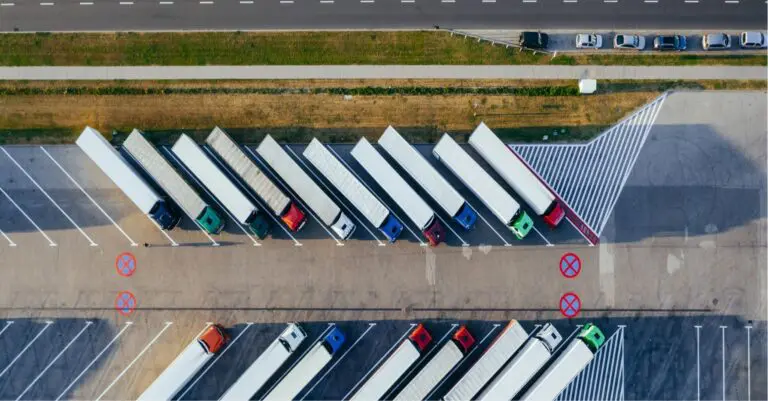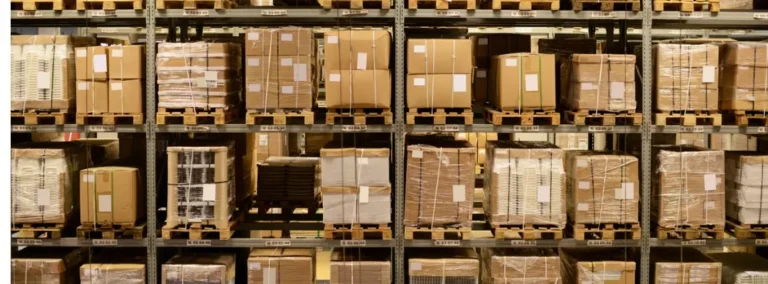One Warehouse Location or Many? How the SPAC Craze Can Help Your Thinking
“You really can’t lose.”
These were words from a finance expert who I had the pleasure of eating with a few years ago. He was referencing investing money into an investment vehicle called a “SPAC.” SPAC stands for Special Purpose Acquisition Company. I will keep this explanation brief to not bore you or expose my own lack of expertise. Effectively, a SPAC is a publicly-listed shell entity that raises money to merge with another company, creating a backdoor for the latter company to go public quickly without as many regulatory hurdles. From 2020-2021, investing in SPACs was hot, and people like my expert friend argued that there were no potential pitfalls.
Well, fast-forward a few years and that has proven questionable.
The Financial Times wrote that the “SPAC bubble and bust is one for the history books.” Many sure-fire SPAC bets have gone bankrupt—including Bird scooters and the infamous WeWork—costing investors billions of dollars. SPACs are a useful tool and can certainly be good investments, but unsurprisingly they don’t magically remove the need for thoughtful decision-making.
In short, there rarely is free lunch in life.
Benefits of Multiple Warehouse Locations
I sometimes see parallels in the world of logistics. One example is the idea that it’s always better to position your product in multiple warehouse locations (each a “node”) instead of a single centralized hub. For example, orders would ship from warehouses in California and New York (based on proximity to the customer) instead of from a single warehouse in Illinois.
There are obvious benefits to this approach, particularly in the world of direct-to-consumer fulfillment.
- Lower shipping costs. Transportation accounts for roughly 70% of total logistics spend, so driving down this line item on your P&L has a high impact. If you have product shipping from warehouses in Los Angeles and New York, most outbound orders will likely be shorter shipping distances. If you’re shipping parcel orders, that means mostly Zones 2 and 3 (lower is typically cheaper and faster) shipments instead of Zone 4 or 5 from Chicago. Moreover, shorter distances sometimes lend themselves to utilizing cheaper carrier services when our customers require an expedited delivery. For instance, your data may show that Zone 2 shipments via a “Ground” service almost always arrive at their end destination within one day, eliminating the need to pay extra for a next day service.
- Shorter shipping times. Customers want their packages quickly. Shipping from locations nearer in proximity to the end customer will typically yield shorter delivery times.
- Enhanced supply chain resilience. Significant winter storms, hurricanes, earthquakes, fires, pandemics, etc. — destructive events are always lurking. Should one occur, having multiple nodes creates resiliency so that you can keep shipping even if one of the locations goes down.
Considerations for a Multi-Node Fulfillment Approach
The problem is that folks sometimes don’t consider the downside to a multi-node approach, only to be surprised and frustrated after making a one-sided decision. Tradeoffs include:
- Increased inventory management requirements. When everything is stored in one place, it’s easier to know what you have, what you can sell, and where you need to restock. Multiple nodes increase complexity. To take advantage of lower costs and faster shipments, you need to ensure the product is available at the right node at the right time. This entails having a clear view of inventory by node and coordinating with suppliers so that replenishments show up to the appropriate place (the CA node may need more of the swimsuit SKU in February, while the NY node may not). This injects cost—directly or indirectly—through additional software or labor needs, and potential vulnerability when suppliers don’t operate at a high level.
- Increased carrying costs. In general, storing product across multiple nodes will require you to have more total inventory on-hand than if using a single node. You need to have sufficient inventory at each location to fulfill orders, and the extra inventory buffer needed at each node usually means you’ll be less lean on inventory relative to fulfilling out of one node. There is a real cost to carrying this extra inventory: tying up cash in the inventory, the cost of storing that inventory (more warehouse space), insuring the inventory, etc.
- More challenging for vendors. Vendors often prefer to ship a truckload or container full of product to a single warehouse location. Asking them to split orders across multiple warehouses through several less-than-truckload shipments may increase costs for them (and you). To avoid shipping partial truckloads, vendors sometimes wait until they can fill an entire truckload before sending to a node — as a result, a brand’s product and sales are delayed and inventory management becomes more challenging. Brands respond to this supplier issue by storing more inventory as a buffer, but that results in higher carrying costs.
- Order management software requirements. Effectively using the multi-node setup requires software that can “route” the order to the appropriate warehouse to be fulfilled based on proximity to the end user, available inventory, and labor capacity. This is typically done through an order management system (OMS). Not only does OMS implementation and maintenance cost money, but selecting or building a high-performing OMS is challenging. As a result, we’ve seen certain brands regularly fulfill out of the wrong node (e.g., ship orders going to San Francisco out of the New York node instead of the LA node), which completely defeats the purpose of the multi-node approach.
This is all to say there is no “right” answer across the board.
No One-Size-Fits-All Solution
WSI has over 30 locations and for many of our customers, we urge the use of several nodes. But there are also customers that we recommend using only a single location. What we strongly believe in is using data to make a thoughtful decision for your specific business rather than relying on blanket rules suggesting that an approach is always smart or always foolish.
As a baseline, your company’s analysis should attempt to quantify (i) savings on outbound parcel shipments and the value of faster shipments to your brand, as well as increased redundancy, and compare that to (ii) the increased costs related to inbounds, software, and carrying additional inventory.
We do find that customers with certain traits tend to be better suited for the multi-node approach. Though not foolproof, here are some characteristics we look for:
- Low SKU count. Fewer SKUs means less complexity with respect to inventory management and lower carrying costs when storing across several locations. Thus, a protein brand with 10 SKUs will be more suitable for storing in several sites vs. a clothing brand with 5,000 SKUs.
- The number of outbound parcel shipments vastly outweighs the quantity of inbound orders. Having vendors ship to multiple warehouses will likely (directly or indirectly) create additional costs for those purchase orders. However, if your brand receives 10 inbound replenishment orders and ships 50,000 small parcel outbound orders per month, those additional costs will be overshadowed. For example, if the multi-node setup saves $1 per parcel order but costs an extra $1,000 per inbound receipt, the merchant would still come out ahead by $40,000 each month (=$1*50,000 parcel orders – $1,000*10 inbounds).
- The geographic spread of outbound order volume suggests positioning inventory in certain locations would impact proximity for a large portion of orders. WSI has its data team look at prior months’ shipment data and assess the cost effect of shipping from different nodes. If you don’t have a data team, but it is clear that 80% of your shipments are going to Southern CA or the Northeast, it’s still a good bet that having nodes in CA and PA will help your cause.
- Outbound transportation is prepaid (vs. collect). Brands should have a good understanding of what transportation they pay for. Most direct-to-consumer business involves prepaid transportation, meaning the brand pays for the transportation and benefits from cost savings. However, if the brand is retail focused, there is a good chance that outbound transportation is “collect” or “third party,” meaning that the brand is not footing the bill. In that instance, reducing the cost of the inbound transportation through fewer nodes may take precedence.
- The brand has a good OMS or is willing to utilize a 3PL’s OMS. Robust technology is needed to support the multi-node approach. If you don’t have it, fulfill orders out of a single location.
The main takeaway is that what is good can be bad, and vice versa. Thus, generalizing what approach your brand should take based on general heuristics is risky. The most important thing is to use facts and data to make a thoughtful decision based on your brand’s specific circumstances.
Source:
https://www.ft.com/content/83f0feba-5168-44da-90d7-b0aa11030cf0
About the Author

Mariana Vieth
Mariana Vieth is a marketing and communications leader with a passion for rallying people behind a common goal and unified message. Currently, she is the Marketing Director at WSI/Kase, bringing her creativity, small business, and public sector experience to the world of logistics. Mariana writes about warehousing, transportation, and e-commerce logistics as well as leadership and culture.









